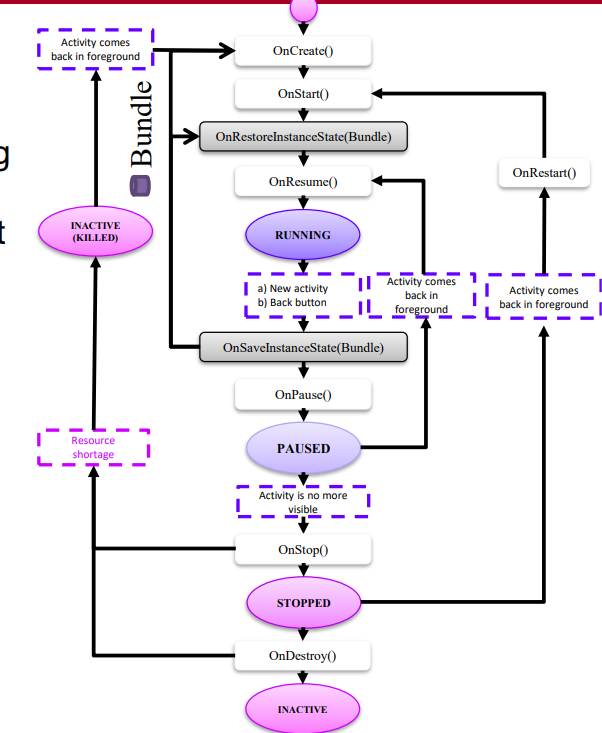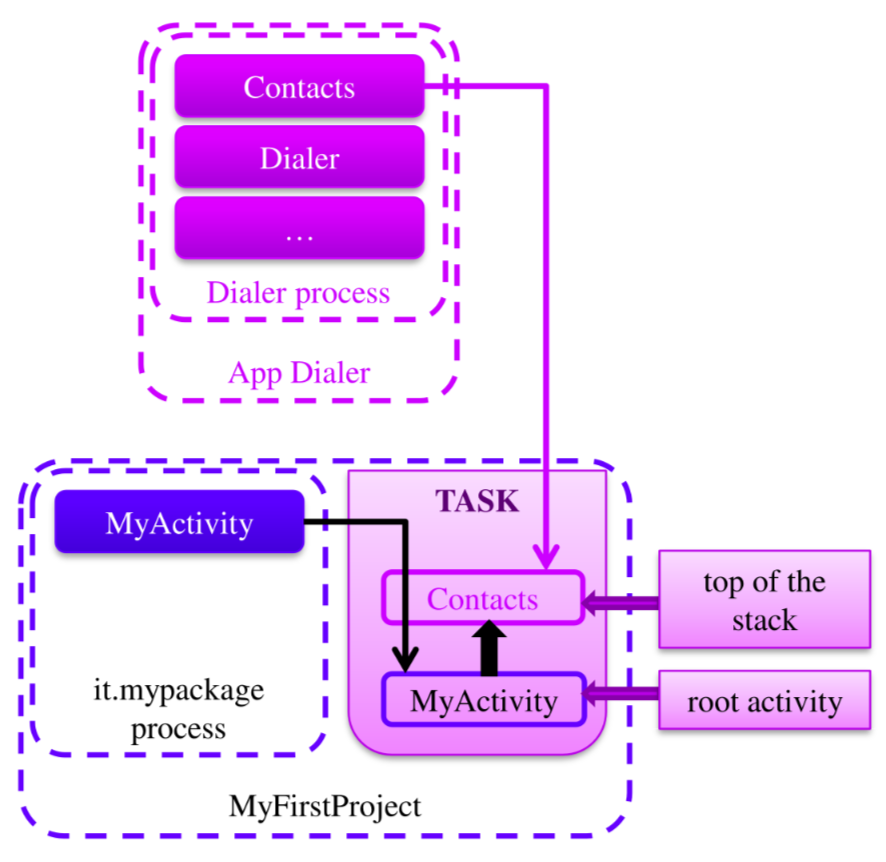ACTIVITY
Activities are the main component of an android application, they can interact with the user and are put into execution by the android runtime
ACTIVITY LIFECICLE
Activities follow a specific lifecicle graph managed by the android runtime, where activities cycle a set of states:
- running when activity is visible and is interacting with the user
- paused the activity is visible but is no more the active one
- stopped the activity is no more visible (e.g. the user has switched to another application)
- destroyed the activity is terminated and resources deallocated

In general only one activity is in the running state where it can interact with the user,but many activities can be processed by the runtime, when an activity is not more visible it transits in the paused/stopped state where it can recover state thanks to the BUNDLE object that the android runtime calls back when the activity is resumed
ACTIVITY PRIORITIES
Activities can have different priorities that change the scheduling:
HOW ACTIVITIES INTERACT: TASKS
The android runtime supports the interaction between activities by tasks, when an activity triggers another trough an intent, the current activity is inserted in a stack where the at the top resides the current running activities, as the activities are terminated by the user they are also removed from the activity stack

TRIGGER AN ACTIVITY TO RUN: INTENT
An activity can trigger another one by sending an intent that can be of two types:
- explicit the activity to trigger is known at compile time
- implicit the activity to trigger is not know at compile time and the android runtime routes the intent trough the correct activities by category,url, and mimetipe specified in the intent by exploiting the intent filter
flowchart LR subgraph android_runtime A[implicit intent] B[application with\n compatible intent filter] C[application] A --parameter specified--> B end
INTENT FILTER EXAMPLE
<activity android:name="IntentActivity">
<intent-filter>
<action android:name="android.intent.action.MAIN" />
<category android:name="android.intent.category.LAUNCHER" />
<category android:name="it.mypackage.intent.category.CAT_NAME" />
<data android:mimeType="vnd.android.cursor.item/vnd.mytype" />
</intent-filter>
</activity>BROADCAST VS INTENTS
Broadcast are an alternative to implicit intents, they are sent when an event occurs, wrapped into an intent object can be of 2 types
- system broadcast sent by the android system when an event occurs (e.g. wakeup)
- custom broadcast sent by an application
multiple ways to send a broadcast:
- ordered broadcast received by one receiver at a time, receivers can abort the propagation
- normal broadcast received by all subscribers with no established order
- local broadcast received by local components of the application
BROADCAST RECEIVER
Application component that handles the broadcast message, they register to different broadcast in 2 possible ways
- static receivers using manifest
- dynamic receivers using app or activities context
SECURITY ASPECTS
it’s important to limit the range of the broadcast messages to avoid leaks and enforce permissions